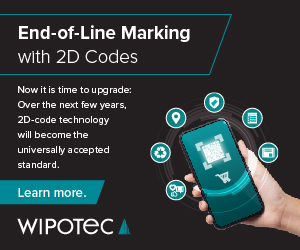BTG Labs’ Surface Analyst Evaluates the Surface Condition of Medical Devices
 The Surface Analyst is an innovative handheld solution for measuring how prepared a material surface is for adhesion. Developed and manufactured by BTG Labs (btglabs.com), it is a fast, easy, accurate and nondestructive instrument for use by manufacturers with critical surface requirements, including manufacturers of medical tubing, prostheses components and implants. The Surface Analyst allows manufacturers to validate their surface preparation process and ensure reliable bonding, coating, sealing and printing.
The Surface Analyst is an innovative handheld solution for measuring how prepared a material surface is for adhesion. Developed and manufactured by BTG Labs (btglabs.com), it is a fast, easy, accurate and nondestructive instrument for use by manufacturers with critical surface requirements, including manufacturers of medical tubing, prostheses components and implants. The Surface Analyst allows manufacturers to validate their surface preparation process and ensure reliable bonding, coating, sealing and printing.
The Surface Analyst deposits a highly purified drop of water on a surface and then measures the contact angle. This, in turn, determines the cleanliness level of a substrate. When a surface is properly prepared, it emits high energy, and the drop of water, as a high-energy molecule, spreads out on the surface as it is attracted to other high-energy molecules. A contaminated surface emits low energy and will cause water to bead up in attraction to itself rather than the low energy surface molecules. By knowing the volume and area of a drop of water, the Surface Analyst then calculates the contact angle of the water against a given surface. The larger the contact angle, the more the water is beading up on the surface – and therefore the lower the energy level of the surface, indicating contamination.
Medical device manufacturing can directly affect an individual’s health and wellbeing. When a product interacts so intimately with human life, there is no room for failure; the final product must be reliable and of the highest quality in order to address patients’ needs seamlessly and without causing harm. Thus, process monitoring and quality control are critical to manufacturing an ideal product.
When used to inspect surfaces in various types of medical devices, the Surface Analyst can:
- Validate the presence, absence and uniformity of antimicrobial lubricious coating on medical tubing
- Determine the appropriate type of surface treatment for your process
- Validate surface treatment such as plasma treating, ultrasonic cleaning, solvent cleaning and media blasting has been effective
- Optimize flame and plasma treatment levels on medical devices to prevent over-treatment
- Ensure the surface cleanliness of stainless, aluminum, and titanium
- Verify that ultrasonic cleaning is uniform and maximally effective
- Audit negative effects on antimicrobial coatings in medical supply storage as a result of extended shelf-life.
- Identify the presence of silicone that can be detrimental to a bond







